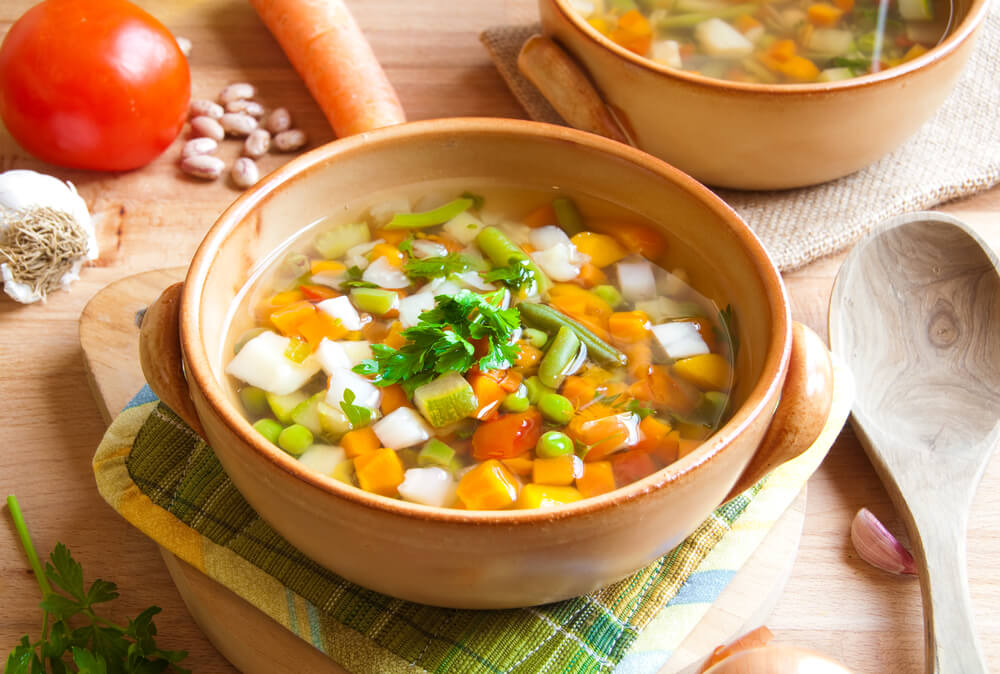8 Tips to Help You Eat More Vegetables

In order to do so, we’ll clue you in on some tips to help you eat more vegetables.
Why eat more vegetables?
They are part of a healthy diet giving us plenty of nutrients (including vitamins, proteins, fibers and minerals). Consuming vegetables can even prevent certain diseases.
Despite their benefits, vegetables are less and less present on tables in every home. Why might that be?Perhaps it lies in reasons like canned or manufactured foods that are quicker to prepare than vegetables.
If you have kids at home, it’s very important to foster an appreciation for vegetables and fruits at a young age. We should use their baby food as a way for them to discover all of the tastes and aromas that food offers.
By acquainting them at a young age, we can avoid a situation where they don’t want to eat healthily and help them maintain a healthy diet into adulthood.
Eating vegetables isn’t synonymous for going on a diet, being vegetarian or sick. On the contrary, in order to feel healthy, we’ll need to add more of them to our dietary habits.
We recommend that you read: 10 Fruits and Vegetables to Treat Liquid Retention
Tips for eating more vegetables
We should be consuming 400 grams of leafy greens each day (raw, if possible). It might sound like a large, and maybe impossible, quantity but you can increase your intake gram by gram to start.
You’ll see that by you start eating the minimum recommended amount, your body will be asking for more.
Check out these ideas for eating more vegetables:
1. Modify your recipes

The dishes that you usually make or eat on a daily basis can change completely if you incorporate some vegetables in their preparation.
For example, you can try adding:
- Diced carrots in meatballs
- Stir-fried broccoli in pasta
- Sliced eggplants stuffed between layers of lasagna, etc.
- You can even make a delicious omelette using asparagus, spinach, mushrooms and broccoli as a filling.
2. Start eating vegetables early on in the day
Who says that at breakfast you can only eat fruits? Though fruits are very healthy, we can also add in vegetables to the mix.
- Some find options can be slices of cucumber or tomato, celery juice with carrot, or an omelette with spinach leaves.
- If you start eating vegetables at the beginning of the morning, meeting the recommended intake of vegetables will be much easier for you.
Visit this article: 5 Easy Vegetables to Regrow
3. Buy vegetables that you don’t know

Next time you go grocery shopping, make sure to grab a vegetable that you’ve never tried before.
You don’t need to buy a kilo, but just enough to have a taste at home. After, look for a simple and quick recipe that uses it. The discovery will be a big surprise!
Switching up the vegetables that we eat has a lot of advantages because, for one thing, we’ll be getting new nutrients. In addition, we won’t get bored of always eating the same thing.
4. Make soups and smoothies
In winter, we often crave heavier and high-calorie foods. We need a dish that can stick to our ribs when we return home while being able to warm us up inside, too.
Is there a better answer than a good vegetable soup? We’re not talking about the soups that come in a packaged envelope, but rather, “the real deal”– just like your grandma would make.
It’s less work than you think and you might even want to leave leftovers for when you want to enjoy it later.
On the other hand, in summer, we can enjoy delicious smoothies and juices made with raw or cooked vegetables. We can even blend in some fruit to the mix.
Leafy vegetables that work great in recipes are carrots, boots, celery, spinach and tomato. Don’t forget about trying out a nice, cold gazpacho: both healthy and nutritious.
5. Keep the vegetables in sight

Though it might be true that refrigerators have special compartments for vegetables and fruits, they’re a little hidden.
If we don’t know that the vegetables are there…how’ll we use and enjoy them? A good idea is to keep the majority of the vegetables in the compartments and leave a few outside, visible.
By leaving some out of the compartments, they’ll be right there, waiting for us as we open the refrigerator door.
Also see: 7 Reasons to Drink Cucumber Juice
6. Look for “alternative” recipes
People who think that vegetarians and vegans only eat lettuce and tomato salads are wrong.
There are a million of recipes that we can make in order to eat more vegetables as well as to let our palate delight in new flavors.
Pumpkin paté, beet and lentil hamburgers, eggplant lasagna…there is a world of options all around you.
7. Use them as a side

If you’re a beef, chicken or fish lover, you can take advantage of vegetables to make all kinds of different side dishes. Forget about the typical, everyday salad.
Try a purée, a zucchini scramble, stir-fried zucchini, etc.
8. Prepare healthy snacks
Another great option to help you eat more vegetables, and at the same time avoid salty snacks or baked goods, is to keep a stock of carrot or celery sticks, cherry tomatoes, bell pepper or cucumber slices.
You can mix them with different patés or dips such as:
- Chickpeas (hummus)
- Avocado (guacamole)
- Eggplants (baba ganoush)
- Greek yogurt and cucumber (tzatziki).
Keeping snacks is a great idea and it also avoids between-meal anxiety.
All cited sources were thoroughly reviewed by our team to ensure their quality, reliability, currency, and validity. The bibliography of this article was considered reliable and of academic or scientific accuracy.
- MinSalud. (2013). Perfil nacional de consumo de frutas y verduras. Fao. https://doi.org/978-92-5-307534-8
- Aranceta, J. (2004). Frutas, verduras y hortalizas. In Archivos Latinoamericanos de Nutricion.
- Viviant, V. (2006). Frutas y verduras. Revista Diabetes Voice.
- Araya L., H., Clavijo R., C., & Herrera, C. (2006). Capacidad antioxidante de frutas y verduras cultivados en Chile. Archivos Latinoamericanos de Nutricion.
- Jacoby, E., & Keller, I. (2006). LA PROMOCIÓN DEL CONSUMO DE FRUTAS Y VERDURAS EN AMÉRICA LATINA: BUENA OPORTUNIDAD DE ACCIÓN INTERSECTORIAL POR UNA ALIMENTACIÓN SALUDABLE. Revista Chilena de Nutrición. https://doi.org/10.4067/S0717-75182006000300003
- Solís-Becerra, C. G., & Estrada-Lugo, E. I. J. (2014). PRÁCTICAS CULINARIAS Y (RE)CONOCIMIENTO DE LA DIVERSIDAD LOCAL DE VERDURAS SILVESTRES EN EL COLECTIVO MUJERES Y MAÍZ DE TEOPISCA, CHIAPAS, MÉXICO. Estudios Sociales y Humanísticos.
This text is provided for informational purposes only and does not replace consultation with a professional. If in doubt, consult your specialist.








